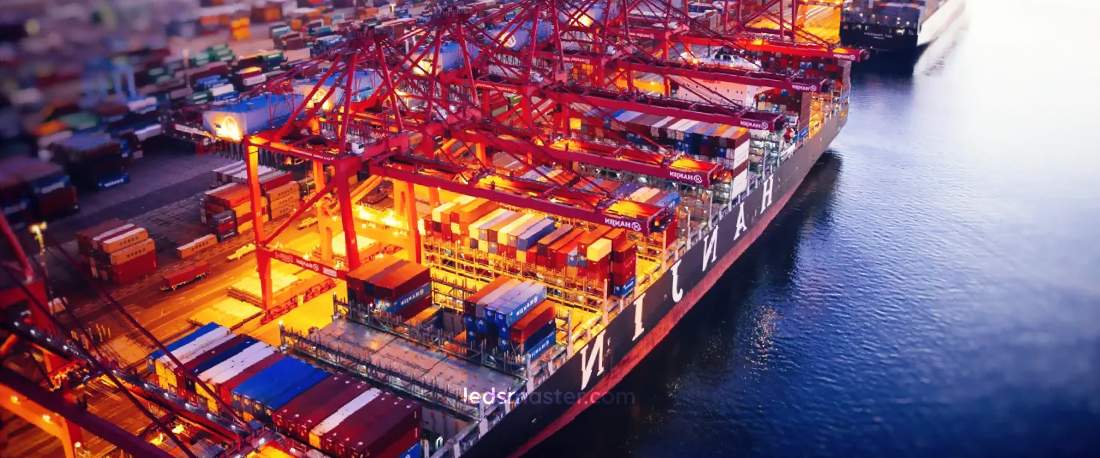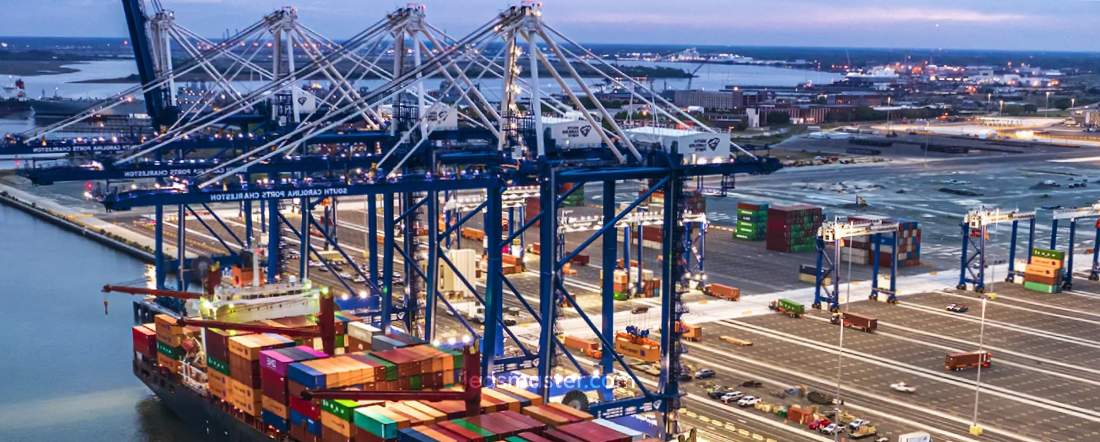Solar container port lighting stands out by combining cost savings with environmental benefits. By switching to solar power, ports can reduce their reliance on traditional energy sources and lower their carbon footprint, all while maintaining effective illumination.
Get your complimentary lighting design today
Solar container port lighting presents a compelling alternative to traditional systems, offering reduced energy costs and a lower environmental impact. By adopting solar solutions, ports can enhance operations while contributing to a greener future.

Table of Contents
Toggle| Aspect | Details | Estimated Cost | Notes |
|---|---|---|---|
| Initial Investment | Cost of solar panels, LED fixtures, batteries, and installation | $500,000 – $1,000,000 | Varies based on port size and system complexity |
| Energy Savings | Reduction in monthly energy bills | 50% – 80% savings | Dependent on local energy rates and system efficiency |
| Maintenance Costs | Routine cleaning and inspections | $5,000 – $10,000 annually | Lower compared to traditional systems |
| Financing and Incentives | Grants, tax credits, or rebates | 20% – 30% of initial cost | Can significantly offset upfront investment |
| Operational Cost Reduction | Long-term savings on energy and maintenance | Up to $200,000 annually | Based on energy prices and maintenance frequency |
| Return on Investment (ROI) | Payback period and long-term financial gains | 5 – 7 years | ROI varies with system performance and local incentives |
The initial investment in solar container port lighting systems can be substantial, covering the cost of solar panels, LED fixtures, batteries, and installation. However, this upfront expenditure is often offset by long-term savings. Traditional lighting systems incur ongoing energy costs and maintenance expenses. Solar lighting, by contrast, reduces or eliminates these costs due to its reliance on renewable energy and minimal upkeep requirements.
Over time, the savings in energy bills and reduced maintenance contribute to a favorable return on investment. Solar lighting systems are designed to be durable, often featuring long lifespans for both panels and LED fixtures. This longevity means that, despite the higher initial costs, the overall lifecycle costs are lower compared to conventional lighting systems.
Various financing options and incentives are available to support the adoption of solar technologies. Governments and local authorities frequently offer grants, tax credits, or rebates to offset the initial costs of solar installations. Additionally, many financial institutions provide loans or leasing options tailored to renewable energy projects. These financial tools can significantly ease the burden of the initial investment, making solar container port lighting a more accessible option for port operators.

Solar container port lighting systems are designed with energy efficiency in mind. They typically use LED fixtures, which are known for their low energy consumption compared to traditional lighting technologies. LEDs convert a higher percentage of electrical energy into light rather than heat, making them a more efficient choice for illuminating large areas like container ports.
Solar panels, another key component of these systems, are engineered to maximize energy capture from sunlight. Modern photovoltaic (PV) cells are highly efficient, converting sunlight into electrical energy with minimal losses. The combination of efficient solar panels and LED fixtures results in a lighting system that uses energy more effectively and reduces reliance on grid power.
The efficiency of a solar container port lighting system is not solely dependent on the solar panels and LEDs. Energy storage, provided by batteries, plays a crucial role in ensuring continuous operation, especially during periods of low sunlight or at night. Advanced battery technologies, such as lithium-ion batteries, offer high storage capacity and longer lifespans, contributing to the overall efficiency of the system.
Solar lighting systems are equipped with controllers that manage the energy flow between the solar panels, batteries, and LEDs. These controllers optimize the use of stored energy, ensuring that the lighting operates at the required levels while extending the life of the battery. Efficient energy management is key to maintaining consistent lighting performance and minimizing energy waste.
One of the most significant advantages of solar container port lighting is its positive impact on the environment. By generating electricity from sunlight, solar lighting systems eliminate the need for fossil fuels, which are typically used to generate grid power. This reduction in fossil fuel dependency leads to a decrease in greenhouse gas emissions, contributing to a lower carbon footprint for the port.
Ports are major consumers of energy, and transitioning to solar lighting can make a substantial difference in their overall environmental impact. The shift to renewable energy sources aligns with global efforts to combat climate change and promote sustainable practices across various industries.
Solar lighting systems are designed to be low-impact, with minimal disruption to the environment. The installation of solar panels involves setting up fixtures that are generally unobtrusive and can be mounted on existing structures or installed on dedicated supports. Unlike traditional lighting installations that may require extensive excavation or alteration of the port’s infrastructure, solar systems can be implemented with relatively low environmental impact.
Furthermore, solar panels are made from materials that are recyclable, and the technology itself has a long lifespan, reducing the need for frequent replacements. This contributes to a reduction in waste and resource consumption over time.
The adoption of solar container port lighting supports broader sustainability initiatives and goals. Many ports are working to enhance their environmental credentials and meet sustainability targets set by regulatory bodies or industry standards. By implementing solar lighting solutions, ports demonstrate a commitment to reducing their environmental impact and investing in sustainable technologies.
Solar lighting also aligns with corporate social responsibility (CSR) objectives for companies involved in port operations. Embracing green technologies helps build a positive image and shows a dedication to environmental stewardship, which can be beneficial for business relationships and community engagement.
Installing solar container port lighting involves several key steps. The process begins with an assessment of the port’s lighting needs and the design of a system that meets those requirements. This includes determining the optimal placement of solar panels and LED fixtures to ensure adequate coverage and efficiency.
Once the design is finalized, the installation team mounts the solar panels and integrates them with the battery storage and lighting fixtures. The installation process typically requires minimal disruption to port operations and can often be completed without significant downtime.
Solar container port lighting systems are designed for low maintenance. Solar panels generally require periodic cleaning to ensure optimal performance, especially in dusty or polluted environments. The LED fixtures and battery systems also benefit from regular checks to maintain their efficiency and functionality.
While the maintenance needs are minimal compared to traditional lighting systems, it is essential to schedule routine inspections to address any potential issues promptly. This proactive approach helps to extend the lifespan of the components and ensures the continued effectiveness of the lighting system.
In the event of performance issues, troubleshooting is straightforward. Common problems may include reduced brightness or energy inefficiency, which can often be traced to issues with the solar panels, batteries, or controllers. Regular inspections and maintenance help identify and resolve these issues before they impact the overall performance of the lighting system.
Solar container port lighting presents a compelling option for enhancing port operations through sustainable practices. The financial benefits, including long-term cost savings and available incentives, make solar lighting a viable alternative to traditional systems. Its energy efficiency, coupled with advanced storage and management technologies, ensures reliable performance. Additionally, the environmental benefits of reduced carbon emissions and minimal ecological impact align with global sustainability goals. Embracing solar container port lighting represents a step forward in creating more efficient and eco-friendly port environments.